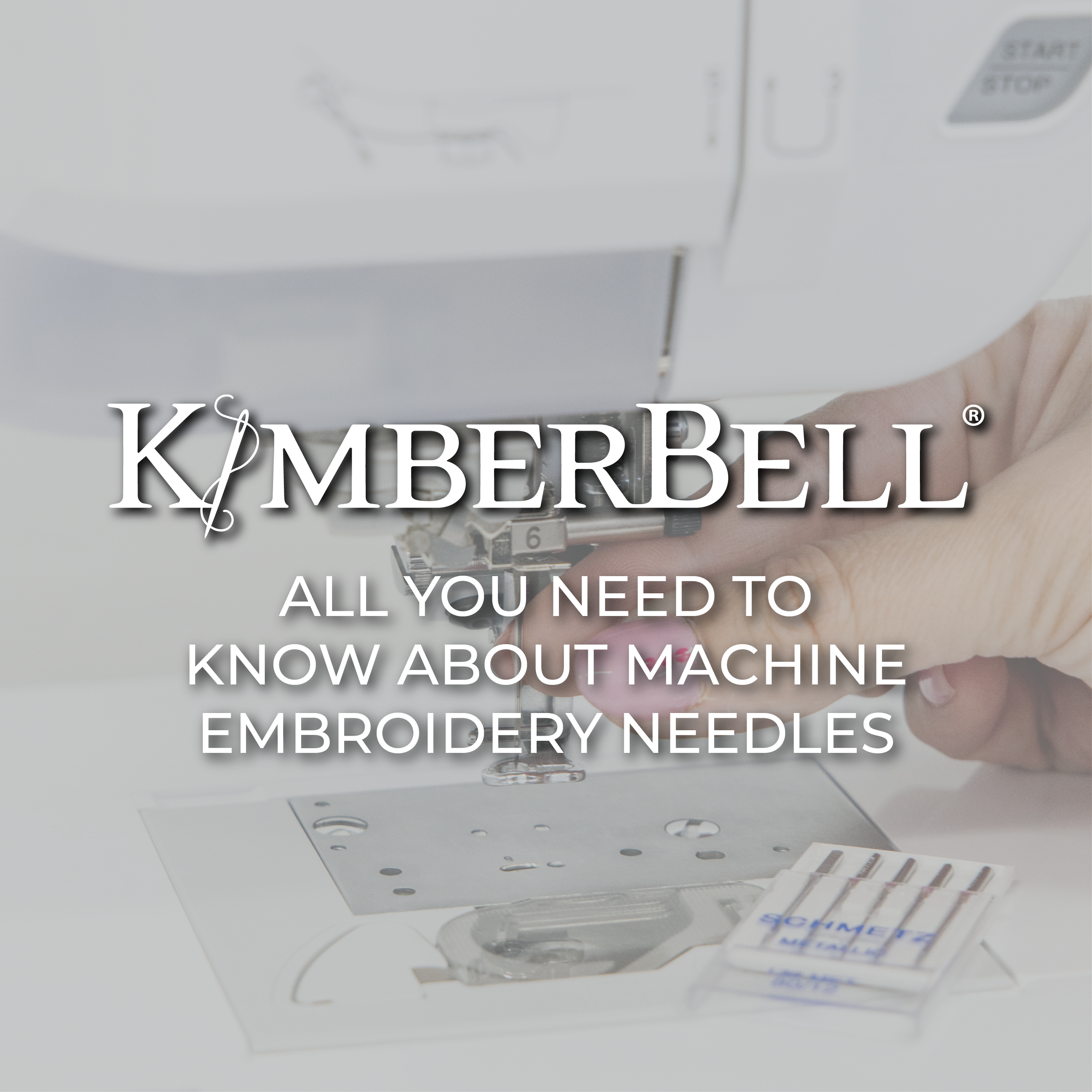All You Need to Know About Machine Embroidery Needles


Needles are a small (but mighty!) part of machine embroidery. You can't embroider without them!
So let’s keep your needle knowledge "sharp" by reviewing a few key "points." (Sorry...some puns just have to be said.) 😀
Needle Anatomy
First, let’s talk about the parts of a needle and how they function in the embroidery process.

Needles are made up of six parts: the shank, the blade (or shaft), the groove, the eye, the scarf, and the point:
- Shank: The upper part of the needle that fits inside the needle bar of your machine. Commercial embroidery machines have a round shank, and home embroidery machine needles are round on one side and flat on the other. Insert the needle with the flat side facing away from you.
- Blade (Shaft): The lower portion of the needle from the shank to the point. The groove, the eye, the scarf, and the point are all part of the blade.
- Groove: The hollow indentation in front of the blade. The blade acts as the final guide, keeping the thread close to the needle until it passes through the eye.
- Eye: The hole that carries the top thread through the needle to meet with the bobbin thread below.
- Scarf: The indentation on the back of the needle. The scarf allows the bobbin casing to come near enough to the eye to catch the thread and form a stitch.
- Point: The very tip of the needle that pierces the fabric and delivers the stitch. There are two basic types of points: sharp (which pierces the fibers) and ballpoint (which pushes the fibers aside).

Needle Sizes
When looking at needle size, you’ll see two numbers: a larger number and a smaller number, separated by a slash. The larger number is the European number based on the metric system (the shank’s diameter relative to a millimeter). The smaller number is the American number (just an assigned number).

Commonly used needle sizes for machine embroidery include 75/11, 80/12, and 90/14.
In the case of an 80/12 needle, “80” is the European number, meaning the shank is .80 of a millimeter in diameter. The “12” is the assigned American size. The smaller the numbers, the smaller the size of needle!
Needle Tips
Needles come in a variety of styles for different uses:
- Sharp: Have a very sharp point that precisely pierces the fabric. Use a sharp needle for tightly-woven cottons or when stitching through puffy foam, thick layers, denim, etc.
- Ballpoint: Have a slightly rounded tip that pushes the fabric fibers aside instead of piercing. Use a ballpoint needle for knits or delicate fabrics.
- Universal: Fall between a sharp and a ballpoint and can be used on either wovens or knit fabrics. Universal needles have a smaller eye. When using a universal needle, make sure your bobbin thread is at least 60 wt or smaller and slow your machine down!
- Top Stitch: Are great for stitching small text. Use with heavy thread when stitching zippers or when thread is looping.
- Specialty Needles: There are also a variety of specialty needles available for specific projects, including leather, metallic threads, hemstitching, and more.
The Most Important “Tip” of All
Ready for the most important tip of all? Here it is . . .change your needle often!
At Kimberbell, we change our needles after eight hours of embroidery. If your needle is even slightly bent, your thread will start shearing and will cause a thread break. So change them often!
I hope it was helpful learning the "ins and outs" of needles! (Sorry, just one last pun . . .)
Happy stitching!




.png)